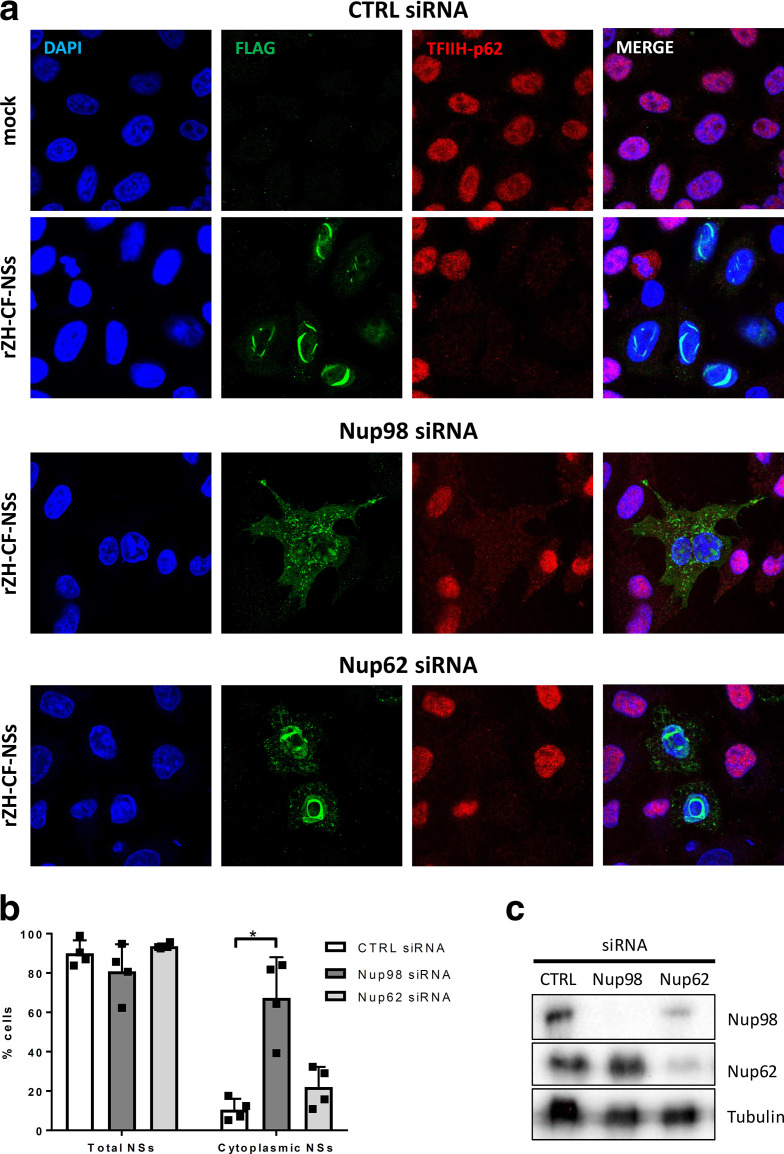Fig. 2.
Effect of Nup98 depletion on nuclear import of NSs. HeLa cells with specific siRNA knockdown of Nup98 or Nup62 were infected with recombinant RVFV expressing Flag-tagged NSs (rZH-CFNSs) or the ΔMx control (rZH-FΔMx) at an m.o.i. of 3. After an incubation period of 24 h, cells were fixed, permeabilized and analysed for the presence of Flag-tagged NSs [Anti-Flag (F7425), 1 : 1000, green channel] and TFIIH-p62 [GTF2H1 (ab55199), 1 : 500, red channel] by confocal microscopy (a). (b) Quantification of microscopy images. In four biological replicates, around 100 infected cells per replicate were monitored for the presence of NSs and the cytoplasmic localization of NSs. *P<0.05 (Student’s paired t-test). (c) Knockdowns were verified by immunoblot analysis. The knockdown was achieved by two-fold reverse transfection with control siRNA (AllStar Negative Control; Qiagen) as well as validated pools of four siRNAs (Qiagen) against mRNAs for Nup98 (GeneSolution GS4928) and Nup62 (GeneSolution GS23636) as previously described [7]. Quantitative reverse-transcriptase PCR showed mRNA reduction to be at least 90 % (data not shown). One day after the second transfection cells were infected as described above. Antibodies for immunoblot were anti-Nup98 C39A3 (Cell Signaling, diluted 1 : 1000), anti-Nucleoporin p62 (BD Transduction Laboratories, diluted 1 : 4000) and anti-beta tubulin (Abcam, diluted 1 : 1000).

